
27 minute read
DEVISING TACTICS
Devising ta for an event
KEVIN BRUNETTE
Advertisement
ti s

Devising tactics is a crucial task, because you need to compete according to a realistic and workable plan.This is essential homework that has to be undertaken in advance of race day, taking your physical preparedness and competencies into account.
Even if physically and mentally robust, you have to apply intellect to how you race.Your competitive hopes can soon evaporate if you remain onedimensional, not adapting to your abilities and those of rivals.Tactics influence the position you stand on the podium or if you stand on it at all.A strategy needs to be infinitely more sophisticated than just staying with the lead bunch, conserving energy, then sprinting across the line ahead of the pack at the finish.
An elite athlete will downplay his or her tactics, giving standard answers to questions relating to the event. He or she might say that they will just pitch up at the start and see how the race unfolds, but will always have a detailed plan in mind.
Being but comprehensive
flexible
Tactics demand a specific mental approach.With competent competition, you have to race smart rather than embrace the notion that only the strongest and quickest paddlers have a chance to pull off a win. Devising a winning tactic involves a complex mix of factors. Being only able to compete in a predictable way significantly diminishes your options.
Tactics need to cover the full distance, from the start, what you do on the course, and how to approach the finish.The key is balancing your pace with the rate at which you expect to consume energy. It means being favourably placed and having For a decent performance, tactics should include:
• where to start and how hard to start
• who to paddle with and for how long
• which rivals to mark
• the bunches to keep with
• when to break away for the finish
• how hard you can sprint at the finish
Tactics need to take practicality and safety into account, dictating the lines to follow. Don’t take risks that place you at a disadvantage.Taking a shortcut through a kelp bed could result in getting tangled up, perhaps with weed on the rudder.
Considering competencies your
Work out how to use your strengths to your advantage, while you can. If you are a downwind specialist and the sea is relatively flat, adjust your approach according to what you can manage.Also take cognisance of where you are in your paddling career; you may no longer be the quickest individual on the water.
Your training regime and seasonal cycle should influence your tactics. While following a program that involves speed, it is not practical to devise a tactic that relies on endurance.A long flat, energy absorbing activity is a significantly different proposition to doing downwind.
You might have a teammate to work with and this can be worth incorporating into your tactics. He or she will have different competencies to you, but anything you can do to optimise using your energy and cover extra distance will be to your advantage.With a teammate, arrange in advance how to work together rather than just going about it randomly; otherwise you will not gain the potential benefit.
Being proactive reactive or
Determine if your tactics should be reactive or proactive, which has to align with your personality, the way you usually go about your paddling activities.
Being reactive means responding to a rival’s actions, whereas proactive means setting the pace and dominating the proceedings. Being proactive necessitates being at the top of your game, introducing some element of risk to hold onto an advantage.You have to be sure of your ability, being the front-runner.
You might choose to play a conservative, waiting game on one sector, then break away from the pack on another.As the course unfolds and you fatigue, your tactical options become fewer with lesser boat speed and as rivals begin to mount more determined charges.
GCU IMAGES Bertie Baard Marathon Champs

The Gauteng Canoe Union Marathon Championships event was hosted byVictoria Lake Canoe Club at Germiston Lake over a sunny enjoyable weekend on Saturday and Sunday 19/20 September 2020 with Guppies and K1’s on Saturday, and K2’s on Sunday.The team will go on to represent the province at the SA Marathon Champs in October at St Francis Bay.The event was an astounding success The guppies and K1’s were raced in near perfect conditions making for some enjoyable racing but on Sunday gusty winds whipped up huge waves in a corner of the dam during the K2 event which resulted
in a few swamped withdrawals, but all in all a great weekend of superb racing across all ages!
A large number of paddlers covering the entire age spectrum had been

training doing the Virtual Berg challenge in the month previous so surprisingly despite lockdown, our paddlers in all age groups were actually fit and ready for the challenge at GCU Marathons! The course distances at the race for K1’s and guppies on Saturday 19 September 2020, were as follows:
With U8 and U10 only finishing 1 lap of 3km with no portages, while
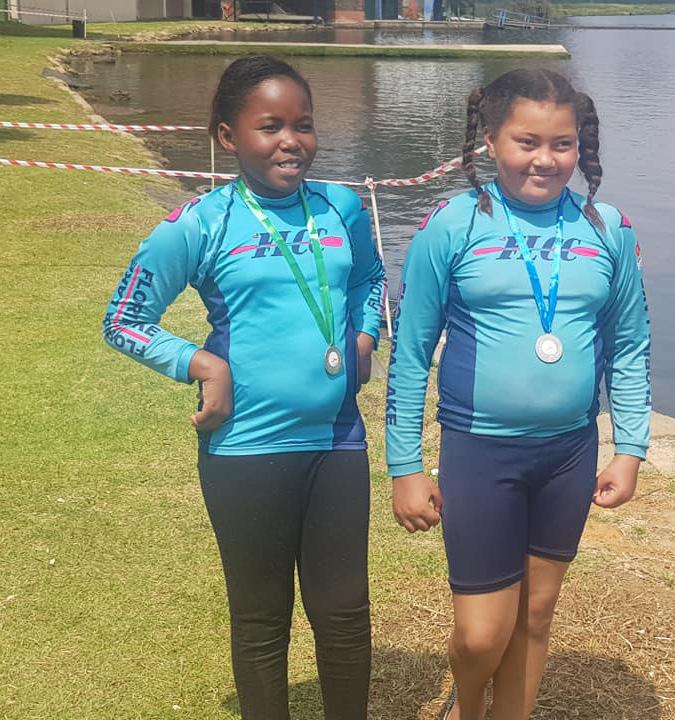
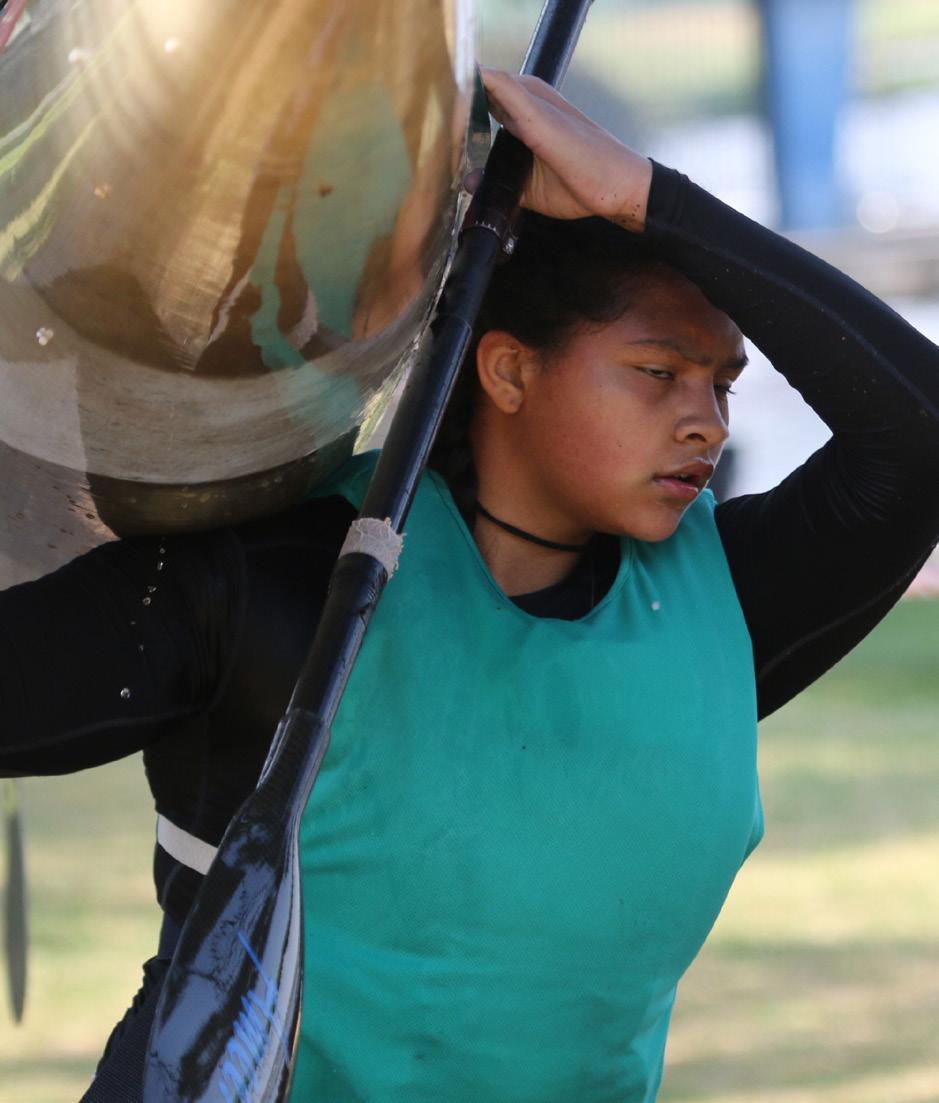



Under 12 completed 2 laps i.e. 6km race, with no portages, while the following age groups distances are noted below - with all required to do the portage on every lap after Lap 2: U14’s race distance was 12.5km U16’s raced 15.5km U18 and older race distances were 21.5km, while the Great Grand Masters race was 18.5km with no portages.
junior highlights
There are a number of really promising guppies and juniors that entered the marathons for the first time and a huge thanks goes out to the coaches and support crew at SCARC for getting such a large crew of female paddlers.
Gauteng was the only province to register an U8 female Axilia Mabhekete from the Academy of Canoe Development who finished in a time of 0:26.
FLCC girls were the two U10 finishers - Reatlegile Maphanga and Chane Steyn - another tight close race in 0:22:12 and 0:22:32
The only U12 female finisher was from SCARC - Juliet Mzibeli finished in 0:45.
The U10 boys race had three finishers - Daniel Shalala and Joshua Friedericksen (DABS) and while Callum Baird all the way from the Lowveld canoe Club, finished 3rd. Very close racing indeed in such a young age group.
Women ’s Race
In the Women’s K1 races, the only U18 to compete was Alexa Godden (Dabs) in 2:07, while Esti van Tonder (from the Academy of Canoe Development at Roodeplaat, coming out of a big endurance block in preparation forTokyo 2020/21 trials) relished the opportunity to race again , and blitzed home in a time of 1:48. Jodie Dreyer was the onlyVet participant (Dabs) in 2:45 and Sarah Evans, the only Sub masters woman (Dabs) in 2:14 - well done to all competitors!
MEN’s Race
The Men’s races saw much more competition - The U18 race was led by Ross Leslie, Jack Edmonds and Connor Erwee (the first two being Michaelhouse paddlers from KNCU, while Erwee is a member at Dabs) in times of 1:43, 1:44, and 1 :46 adding to the excitement and challenge! The GCU members top three would then include Harry Edgar (Dabs) in 1:59, and Tshephang Mashakana from Academy of Canoe Development in 1:49, and 2:20.
In the U23 race, Bradley Boulle, Benjamin Mntonintshi and Wongama Makasi from Dabs, SCARC, SCARC respectively finished in 1:41, 1:46 and 1:49, while the SENIOR racers Clinton Cook showed that he is in great form coming out of Lockdown taking the win from Michael-John Robb (both from Dabs) whose times were clocked at 1:38 and 1:46.
On Sunday 20 September the K2 racers participated in the choppy windy conditions with the following results:
Women first,All SCARC Women! Thumbs up to these hardworking women! Super to see such effort and dedication in these age groups showing us how it should be done!
Under 14 Women
1. Lungile Mahwayi with Lesedi Bobo, The U16 Women
1.Thembelilihle Jokozela and Tinyiko Mahwayi
2. Snethemba Ntombela with Chwayita Fanteni
3. Sibngile Rengqe and Amanda Ngamlana
The U14 Men
1. Jess Webber with Bruno Cochcrane (Dabs)
2. Owethu Duna an Sinelihle Jiza (Scarc)
3. Sikhanyisele Dekeda and Nkokhona Makasi (Scarc)
The U16 Men
1.Theo Dryer and with Joshua Gillespie (Dabs/Crocs)
2. Bert Matruje and Aphiwe Makhoba (JCC)
3. Siyamthanda Qumbelo and Phikela Ngamlana (SCARC)
The U18 Men
1. Ross Leslie with Chase Leisegang (Michaelhouse team)
2. Nicholas Erwee and Harry Edgar (DABS)
3. Luke Salmon and Connor Erwee (DABS)
The U23 entrants Wongama Makasi and Benjamin Mntonintshi (SCARC) finished in 1:46.
Clocking the best time of the day in the Senior Age Category race, Wayne Jacobs and Clinton Cook (Dabs) finished in 1:37, followed by Jack Edmonds and Michael John Robb (Mic/Dabs) in 1:43.
The Sub Veterans team were represented by Ryno Armdorf and
Robert Hamer (Scarc/VLC) in 2:06, and the Veteran race paddlers were Mark Garden/Kelvin Byres (DABS), Roy Clegg/Elton du Preez (VLC/ CENT) and Shaun Maphanga with Douw Kruger (FLCC) with their times recorded as: 1:47, 1:59, 2:10.
While the Sub Masters racers were Dave Hamilton-Brown and Luke Symons, in 1:44! followed by Roger Stubbs and Matthew Ballenden (Dabs), in a time of 1:49! The Masters were Pieter Engelbrecht/ Michael Stewart (Cen/ERK), and Franz Lottering with Vallon Kupferberg (ERK) with another excellent time result in 1:43, and 2:03. The Grand Master race brought in Theo Smit and Pierre van der Merwe (Centurion) and Chris Visser with Lloyde Hanson (DABS) - their times were:1:46, 1:52!
The Great Grand Master finishers were John Rowan and Franz Fischer (ERK/VLC) in 2:12.

JENNIE DALLAS


SA Marathons 2020

If the provincial trails are anything to go by we are in for a monumental two days of racing at this year’s SA Marathons in St Francis on the 11 and 12 October. Just a glance over the results sheets from the provinces reveals some very interesting results. In Gauteng Clinton Cook stole the senior men’s show by nearly 10 minutes paddling at high altitude. When he is down on the coast his is going to be formidable with more air in his lungs.While on the topic of being close to the sea, did you see the titanic struggle between up and coming U23 star Uli Hart and the super tenacious Nicky Notten for first place in the WCCU senior trials? Hart got the better of Notten by 0.1 of a second putting surfski champ Kenny Rice in to third place. In 2019 Notten tried everything to get to China after McGregor was forced to retire due to ill health. He unfortunately could not get it right and I sure will be determined to finish in the top two in order to make his position in the team stick this time. In KZN it was the much talked about pair of Hamish Lovemore and Hank McGregor that came charging home leaving this year’s Dusi star Khumbulani Nzimande to paddle in just over ten minutes later to claim the 3rd step on the podium.
In the senior women’s race the serious money must be on the pair of Jenna Ward and Bridgitte Hartley from KZN. Both seasoned marathon competitors having represented South Africa numerous times.The huge surprise and definite wild card in the mix must come from sprint queen Esti Van Tonder from Gauteng.Van Tonder has had her head down and been focusing on qualifying forTokyo 2020 (now Tokyo 2021) so we know that she has sprint after sprint wound up in those arms of hers and will not be scared to burn a few matches early on in the race to keep her competitors on their toes.The million dollar question will be how fast her transitions are. Both of her competitors are lightning fast in the transitions and shown again and again that they can run effortlessly with a K1.Ward and Hartley will need to make the portages count in order to get a gap on Van Tonder who will undoubtedly be nipping at their heels.While the number of
women competing at the U23, snr and SV level is cause for concern the coaches at SCARC (GAU) should be applauded for the brilliant work they are doing in encouraging young girls to participate at marathons with five doubles teams entering U14 and U16.
The course itself it going to be all about tactics and watching the tide as the paddlers race around the St

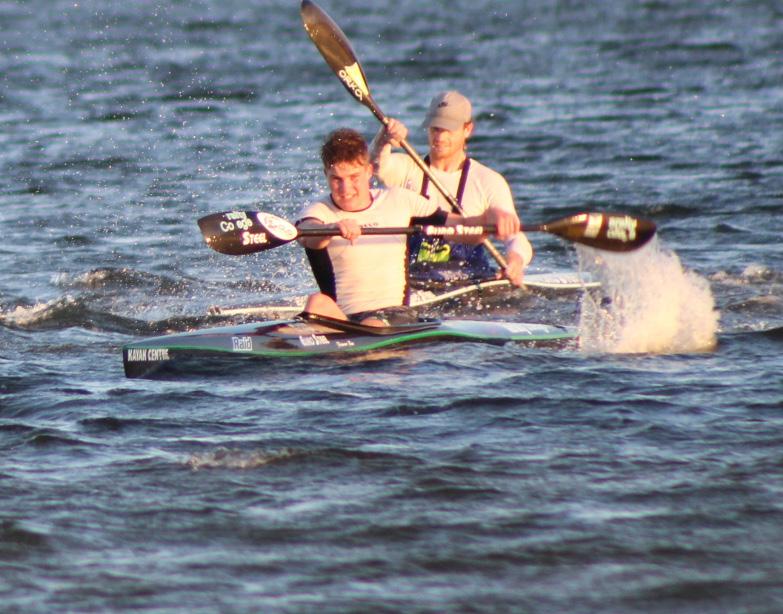
Francis marina.There are a number of tight turns on the course, add to that being potentially squeezed by bridge pillars and being stranded on a sand bank on the outgoing tide and one has the receipt for a thinking paddlers race. For example being caught on the outside of turn three will earn paddlers a lot of work to do to catch the inside paddlers before the next turn. Lastly who can forget when the lighter paddlers opted to paddle the portage when the incoming tide flooded the portage sandbank?
One thing is certain, if you are lucky enough to be able to make your way to St Francis make sure that you get a good seat where you can see some of the action in the canals and if possible the portage area.
PETE MARLIN MEMORIAL SURFSKI RACE
Pete Marlin was a charismatic, high energy free spirit who loved wild places and adventures which he found aplenty in the rivers and seas of the rugged and magnificent coastline of the Eastern Cape. He went to school at Queens College arguably one of the best rugby schools at that time in the country. He qualified as a civil engineer at Natal University and there after moved to East London. He joined a small of small group of intrepid, pioneering kayakers and paddlers who began to explore every river that could be paddled in the Eastern

Cape. Pete’s free spirit and love for adventure endeared him to a beautiful young teacher, Sheryle whom he married. Sheryle is now married to another paddling legend and renowned fisherman Peter Meyer.
In 1989 the small paddling community, family and friends from around the country were shocked by the tragic news that Pete had lost his life whilst paddling on the Umkomaas which derives its name from a zulu legend and is known as the river of chiefs and the place of cows.This tragic event sowed the seeds for a race in memory of Pete and was organized by his band of fellow paddlers.This race has become an iconic event on the surfski calendar in South Africa. It has grown exponentially drawing paddlers from around the country and internationally. It has hosted the South African surfski champs three times and been part of the ICF world surfski series.
Tribute is paid to another popular paddler, Mark Feather, who tragically lost his life and is sorely missed by all paddlers, this surfski race thus holds special sentiment to many who paddle!
The race is generally a 22km course from Yellow Sands, East of East London, to the Nahoon or Orient beach subject to weather conditions. Past winners have included Bevan Manson, Richard von Wilderman, Dawid Mocke, Matt Bouman, Barry Lewin, Grant van derWalt, Nikki Mocke, Nikki Birkett, Hank McGregor, Michelle Burn, Jasper Mocke, Hayley Nixon and Nicholas Notten. Every paddler who has had the privilege of participating in the race and been exposed to this exquisitely beautiful coastline, has gone away with incredibly rich memories of a friendly, welcoming, hospitable
community, whom gladly open up their homes to host paddlers from out of town!
This event has been made possible by the support of incredible, generous sponsors namely: Hansa and Powerade, SNG Grant Thornton, Fenn, Kia, and last but not least our Anchor sponsor DISCHEM.The professionalism and organization of the race has been a result of the commitment and leadership of Charl and Bernice van Wyk and their team, who are primarily surfski paddlers themselves, passionate about the sport of surfski and its future growth!
We would like to thank the Transvaal Navy paddlers from Gauteng, who make the trip down to East London annually and bring with them an abundance of banter and camaraderie, as well as fellow Natal paddlers; and both Eastern
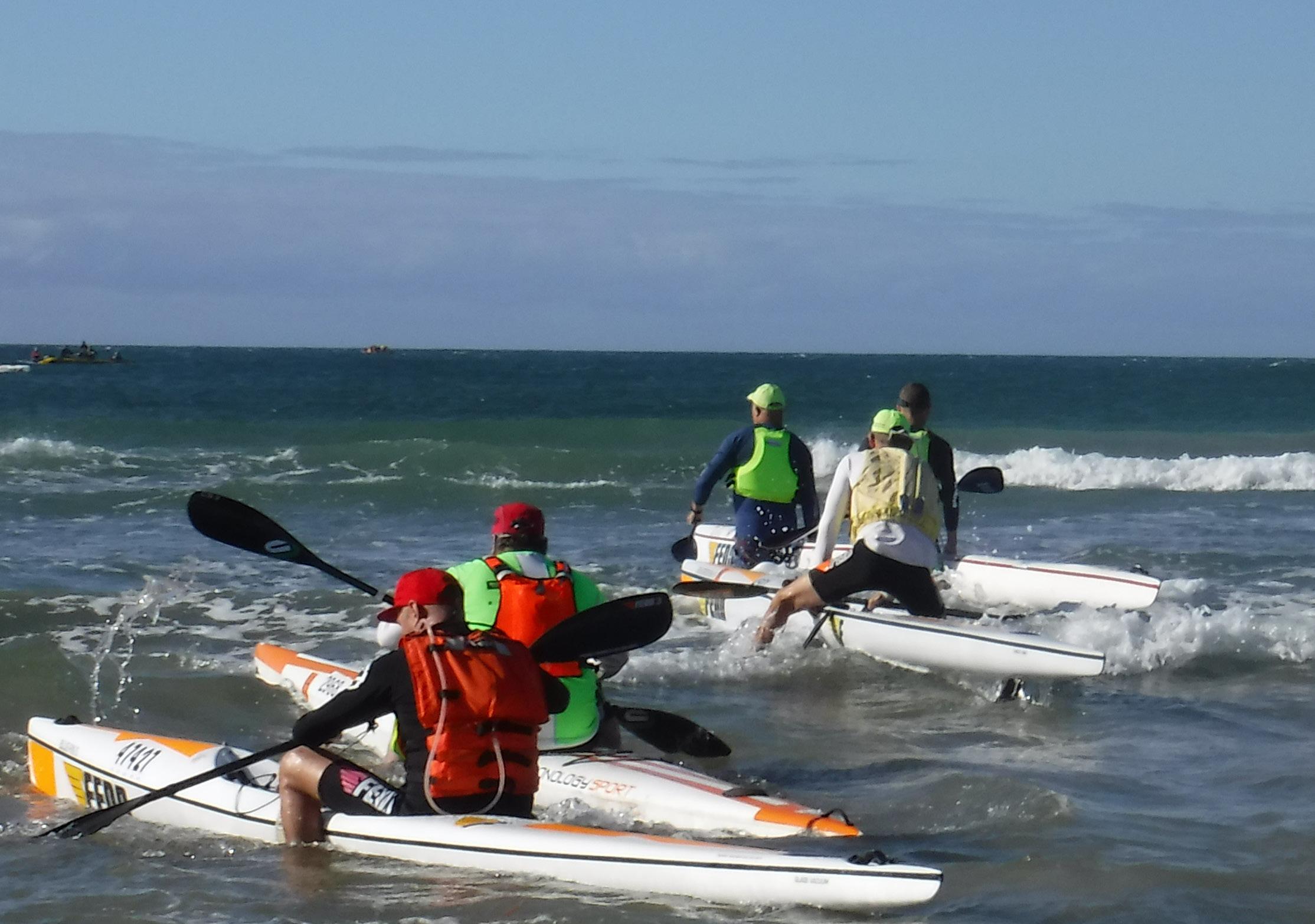
and Western Cape paddlers!! The Pete Marlin Surfski Race wishes all surfski paddlers well and look forward to seeing you all again in 2021 for the most exciting weekend of racing…bigger and better than ever before!
NICOLE BIRKETT


Paddling down the singing canyon

Two billion years of geological activity has formed the Grand Canyon of the Arizona desert and for all this time the mighty Colorado River has patiently forged a chasm a mile deep in its relentless drive towards the sea.
Sheer cliffs plunge to the canyon floor and constrict the might of the surging Colorado River, choking its waters, whipping them into a frenzy of mad foaming rapids, consuming whirlpools and boiling eddies.This is the ultimate challenge in whitewater kayaking and rafting drew the largest kayaking expedition in history to Arizona State, USA. Sixteen South African kayakers. Led by Springbok Chris Greeff and world renowned river guide, Cully Erdman, launched their multicoloured plastic kayaks at Lee’s Ferry in July this year. Supported by five large inflatable rafts crewed by another 12 South Africans, they faced 380 kilometres of the world’s biggest white-water on a flooded river.
The Colorado River maintains an effortless ten kilometres an hour flow, its swift icy waters rarely calm. Minor rapids boast two metre leaping waves and occur with alarming regularity. Between these mad, foaming stretches of water the impatient river is punctuated by huge whirlpools and eddies that rush upstream, their pace matching that of the adjacent current.
Soon after the expedition had launched, Peter Swanepoel’s kayak was pitched vertically in a trough and then engulfed by a huge whirlpool, both kayak and paddler disappearing completely beneath the boiling surface.A frantic Felix Unite searched for his companion and finally discovered him as he reappeared 15 metres downstream, shocked and gasping for breath, clutching at Felix’s craft for support.
The huge river has issued the first of many warnings and was to earn the respect of the entire expedition.
After a long harsh day on the river, bodies roasted by the merciless Arizona desert sun, battered by relentless white-water, the evening sun settled rapidly on the distant canyon rim.As dark shadows lengthened softening the rugged cliffs, the welcome odour of Dutch oven cooking wafted gently on the twilight breeze.Tranquillity descended on the campsite as each expedition member reflected on the
events of yet another action packed day.
A boatman’s cry of“grubs up” would later summon the tired party to the camp kitchen and a fervent discussion of the days rapids, rescues and swims would shatter the canyon solitude. Sing-songs and river tales soon forged a close-knit group, a critical factor to ensure the success of such and expedition.
Later, as the glowing embers died, the group would disperse to lie beneath the sparkling desert stars, each to absorb one of nature’s supreme experiences and to steel themselves for the challenge for the day ahead.
Rated 10 on the scale, Crystal Rapid soon dominated all conversation as the trip progressed.
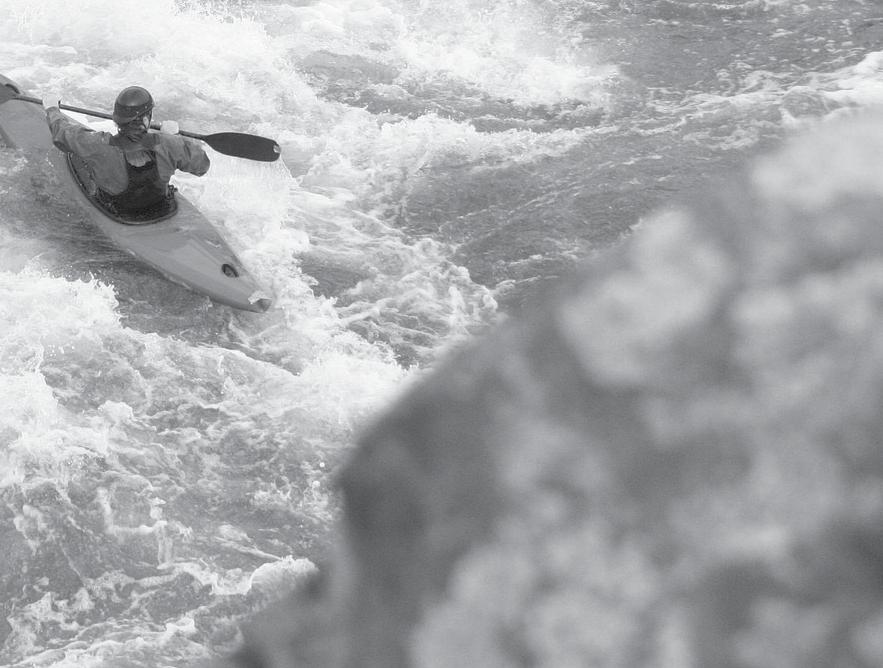
A nervous scouting party studied the route from the top of massive boulders lining the bank.The rafts provided some breath-taking moments.Watching their headlong passage, it seemed impossible that the dancing rubber craft could avoid crashing in to the sheer canyon walls.
Yet, as the boatmen strained at their bucking oars, the foaming water leaping against the cliffs rebounded in a crushing lateral wave, thrashing the rafts back in to midcurrent, their sterns narrowly avoiding the gaping, threshing hole behind the standing waves.
The drenched occupants, swamped by tons of water, bailed frantically, while screaming with adrenalincharged delight.

Felix Unite committed himself to the daunting run. Dwarfed by the initial three metre wave, he was buried by a mass of foaming water as the crest crashed on to his bright yellow helmet. He emerged unscratched, to the cheers of the party lining the banks and a succession of spectacular runs and some more spectacular swims, followed.
On two occasions the expedition narrowly avoided disaster.
Effervescent, tireless Mick Whitehead endured the sight of the acrobatic kayaks for only a few days. Characteristically he borrowed one
of the kayaks and soon capsized in midstream.The swirling torrent carried him and his rescuer into a cave at the foot of the canyon walls.A vicious whirlpool filled the cave and sucked him beneath the spinning kayak on four occasions, ripping his shoes from his feet and then contemptuously spat him back into mid current. He was pulled from the river a kilometre downstream and ironically his shoes were later recovered in different eddies.
WendyWalwyn, the only girl kayaker, capsized nearTuna Falls Rapid and was rescued on the brink of a huge hole behind Richard Nixon rock, a kilometre downstream.A raft managed to reach her and conveyed her to safety while her rescuer had to paddle his kayak upstream to skirt the fearsome obstacle.
The tranquillity of Shinimo Creek Falls, it cascading waters forming a lace curtain of white above the Colorado’s silt-laden, apricot waves, did little to erase the memory of Wendy’s narrow escape.
Throughout the journey, side hikes up lateral canyons provided expedition members with a wealth of fauna, flora and geological mysteries to study, each contained in the canyons unique mircowold. Natures timeless chasms, removed from the deafening roar of whitewater, gave one a new appreciation of the isolation and vastness of the area.
Six kilometres inside Tapeats Creek hikers discovered the source of Thunder River where an arching torrent of sparkling water gushes from the gaping cave 1000 metres above the canyon floor, creating a lush forest below. Havasu Creek, a green oasis of trees and shrubs, contrasted with the arid main canyon which is almost devoid of vegetation. Glorious pink and yellow hues of delicate blossoms adorning a variety of spiny cacti provided colourful gauntlet to Beaver Falls. Cully Erdman, Bridgette Borton and Felix Unite leapt 20 metres in to the aquamarine water below, surfacing behind a curtain of descending water.
From these peaceful sanctuaries the hikers returned to their rafts and kayaks to the rush of the river in the main canyon, ready to pit their strength and skill against the violence of the awesome Colorado River once again.
The monstrous Lava Falls Rapid stood between the expedition and success, as the end of the canyon approached.The air was charged with expectancy and foreboding the night before the party reached the volcanically formed rapid. Someone decided that the evening drizzle was not rain, but spray from Lava Falls five kilometres downstream. Similar timely humour characterized the entire trip.
Lava Falls undoubtedly deserves it rating of 10. An immense hole virtually covers the approach, and a narrow tongue of turbulent water skirts the hole near the left bank. Having watched the ‘heavies’ (Mick Whitehead, Dave Bruce, Rodney Park and Geoff Myburgh) power the big raft through Crystal Rapid, the ‘Amazons’, the female crew, thundered expertly through sheets of spray and frothing water, their raft bucking into the safety of and eddy downstream.
Most of the kayakers chose to follow the safer route behind the rafts while Cully Erdman flawlessly led five paddlers down the “hairy” route to the right of the hole. Four crushing 2½ metre waves immersed the paddlers as they fought to remain upright, their gleaming helmets disappearing beneath haystack-like waves, the vivid kayaks dancing on top of exploding walls of water.
Ryan Anderson misjudged his approach and the rivers invisible tentacles pulled him in to the big hole. He emerged 50 metres downstream after his kayak and paddle had reappeared and finally crawled on to the bank, bruised and shaken. He was immediately appointed captain of the expedition swimming team, the party’s inherent humour again tempering the gravity of the dangerous situation.
The might of the Colorado River is harnessed by the Boulder Dam and its energy drained by man forms Lake Mead.A vast docile expanse of shimmering water. Into these tranquil waters the expedition travelled with mixed emotions. Each member left with a sense of victory, yet with an overriding felling of respect, awe and humility.
The concluding thoughts in the journal by Major John Wesley Powell came to mind as the expedition reached its end:
“Now the danger is over, now the toil has ceased, now the gloom has disappeared, now the firmament is bounded only by the horizon, and what a vast expanse of constellations can be seen! The river rolls by us in silent majesty; the quiet of the campsite is sweet; our joy is ecstasy. We sit until long after midnight talking of the Grand Canyon, talking of home.”


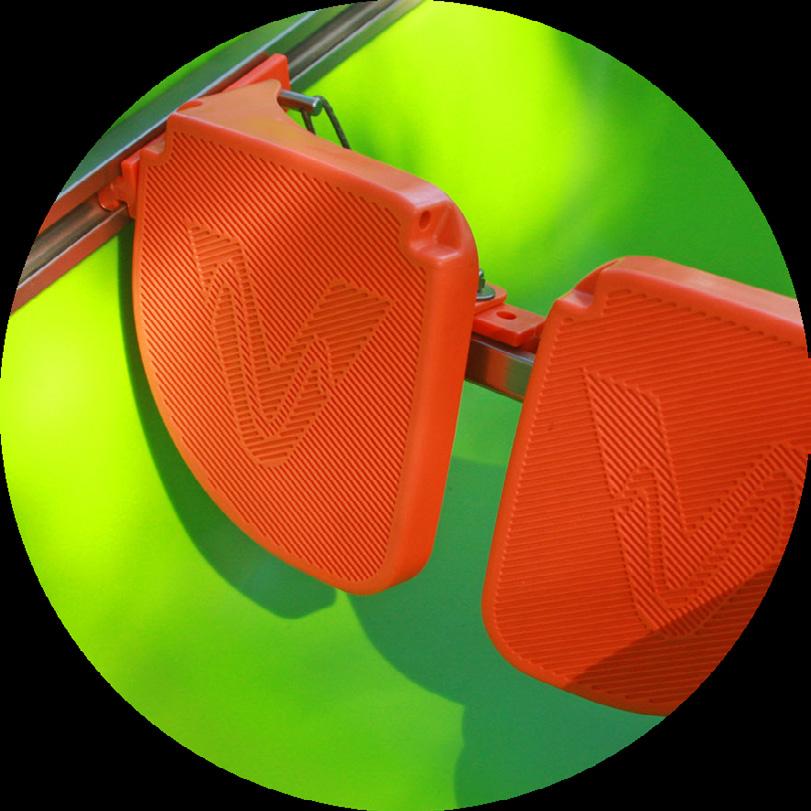

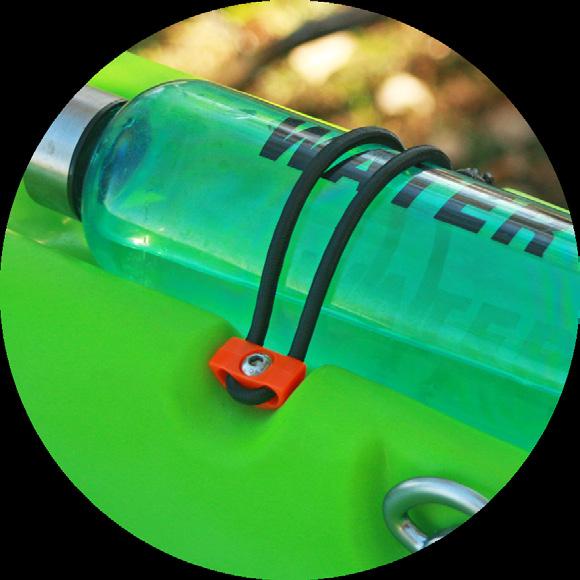


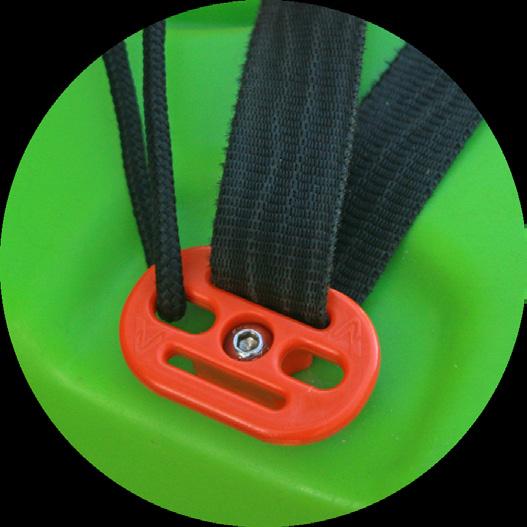
Opini n Improbable legacy
IMAGE dusi.co.za




South Africa punches above its weight on the world stage in many different environments: sport, technology, medical and more. Paddling is no exception. Over the past seven decades, many South African paddlers have made their mark outside SA’s borders.
Early pioneers like Dr Ian Player and ProfWillem van Riet may not have competed at the highest level internationally, but their river expeditions and multiple wins of long endurance river races put them right up there with the best of the best from other parts of the world. Even more importantly, both Player and Van Riet made their mark internationally as conservationists.
The next generation of paddlers had more opportunity to travel and compete abroad, enabling kayakers like Tim Biggs and Jerome Truran to take the adventurous spirit of the early pioneers to a different level.They competed at the highest level and also undertook major expeditions, including some serious first descents abroad.
In the 80s and 90s, paddling sports diversified and paddlers began to specialise.While this happened worldwide, South Africa took a slightly different route as a result of its focus on river marathons. Nonetheless, numerous paddlers continued to put SA on the world map.
It is a difficult task to name every South African paddler that made a name for themselves over the seas, but I would like to mention the paddlers who really stand out for me.This is by no means the definite list of top SA paddlers, but rather a list of paddlers that, in my very subjective opinion, have been most successful in establishing a Paddlers like Lee McGregor, who first made his name as swimmer and later as surfski paddler.The Chalupski family, with Oscar being the most well-known outside the borders of our country.
Robbie Herreveld and the late Mark Perrow, two of the most talented all-round paddlers this country has ever seen, and who could have achieved even more with better international exposure.
Martin Dreyer took over the mantle from Graeme-Pope Ellis on the Dusi, but also made a serious name for himself as adventure racer on the world stage.
Hank McGregor, Dawid and Jasper Mocke are all tough as nails and highly competitive in international races. Sprinters Bridgitte Hartley and Chrisjan Coetzee are top contenders in any race they enter.
On the whitewater side, Corran Addison and Steve Fisher are household names all around the world as top competitors and inventors of freestyle moves.The late Hendri Coetzee is considered to be one of the greatest expedition paddlers in history. Others who made a name for themselves as competitors and also expedition paddlers are Andrew Kellett, Shane Raw, Ross O’Donoghue and the late Graeme Anderson.As whitewater guides and safety experts, few can hold a candle to Stan Ricketts, Jakes Saaiman and Jane Dicey.
South African born Mike Horn, highly acclaimed adventurer who resides in Switzerland, is not a paddler, but he is highly revered in the riverboarding/hydrospeeding community for his solo descent What is maybe less well-known is the impact that South African manufacturers are having across the globe.A number of manufacturers successfully export their products and hold a reputation for producing top-quality craft and great designs.
Fenn Kayaks in East London has been exporting surfskis for two decades, and their crafts are well regarded in many parts of the world. Carbonology Sport in Porth Elizabeth is a younger company but no less successful with their surfski exports.Then, of course, there is Epic Kayaks, a USA company with strong South African roots, which is considered by many to be the world’s premier surfski brand.
On the fishing ski side, Stealth Kayaks in Durban has a solid reputation in Australia and they are making in-roads in the USA and Europe. Racing kayak manufacturers have taken a hit in recent years with the local river-racing market contracting, but Knysna Racing Kayaks are exporting their quality craft with great success.
Mocke Paddling Gear and Orka Paddles, both based in Cape Town, are flying the SA flag with their innovative and high-quality gear. My own new brand of paddles and other paddling-related gear, under the brand CEKR Gear, is not yet officially launched and I already have a demand from international distributors.
South African-born Corran Addison, who is based in Canada, has been at the forefront of whitewater and SUP development for three decades already. His latest venture, Soul Watercraft, is already taking the North American whitewater market
Finally, I have to blow my own trumpet a little. My first kayak company, Fluid Kayaks, was quite an established player in the international world of whitewater kayaking, with a reputation for innovation back in the day when I drove R&D.
My new kayak company,Vagabond Kayaks, is only two-years old, and already we are making waves in all the main markets overseas, with my latest designs considered to be the most innovative recreational kayaks on the market. My reputation for making quality craft has also resulted in a number of international kayaking brands moving production of their kayaks to our factory. This article is not so much about bragging about our collective efforts, as paddlers and manufacturers, as it is about highlighting the fascinating fact that our impact on the international paddling world is entirely disproportionate to the number of paddlers in this country.
There are only a few thousand river racing and surfski paddlers in the country, and just a few hundred whitewater kayakers. Comparing the number of active paddlers in this country to that of most countries in Europe, Canada, USA, Australia, New Zealand, Japan, China, and many others, South Africa should be a non-entity in the international world of paddling.Yet our paddlers and manufacturers command respect in all corners of Why is that? How can such a small pool produce such a big impact? Is it the result of the years of isolation that forced us to think outside the box as it did in many other fields? Is it the result of a general ‘can do’ mentality, or a ‘boldly go where no one has gone before’ attitude?
I do not know what the answer is, but I think that South African paddlers in general do not realise how unique our situation is, and how fortunate we are to have access to this wealth of knowledge and expertise as well as worldclass kayaks and gear right on our doorstep. Our legacy on the world stage is highly improbable, yet undisputable.








